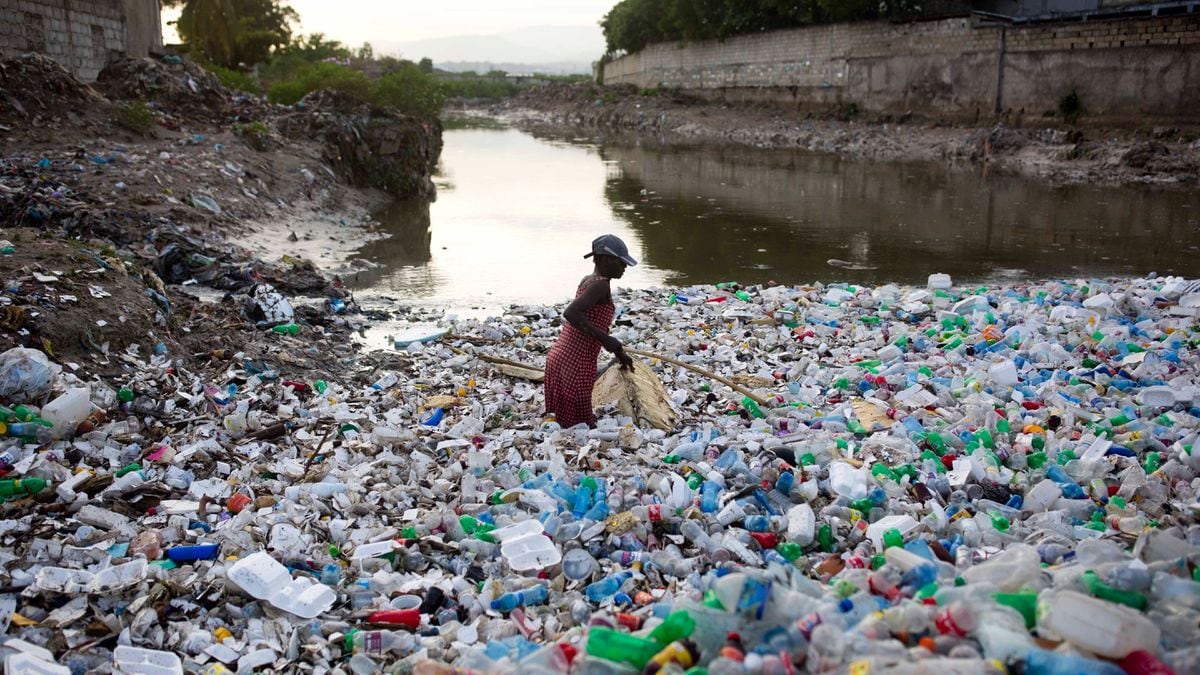Enlarge image
Plastic garbage in the sand
Photo: Giovanni Candemi / EyeEm / Getty Images
During the corona pandemic, some people who occasionally picked up food from their favorite restaurant suspected that the packaging waste that comes together with every delivery cannot be that good.
Two studies have now shown where some of such packaging ends up: in rivers and seas.
According to the work of Spanish researchers, much of the trash particles from European rivers come from takeaway food and drink packaging.
Every year between 307 and 925 million such larger plastic parts end up in the oceans, the scientists write in the specialist magazine "Nature Sustainability".
What was examined was not microplastics - these are much smaller parts that come from more strongly decomposed garbage - but macro-waste: parts more than 2.5 centimeters in size.
They make up around 80 percent of the plastic washed into the oceans worldwide.
For their work, the scientists standardized existing lists of waste in the various areas of the ocean and classified the waste. Plastic bags were most common on coastlines, while in the open ocean nearly two-thirds of macro-litter is related to fishing activities. Ropes, nets, buoys and other fishing accessories are buzzing around here. The rubbish had the least amount of plastic in river beds, where there was also a lot of wood, metal, rubber and textiles. The waste in the river water consisted almost entirely of buoyant plastic.
From the distribution of the floating waste in the sea, the researchers conclude that a large part of the waste brought in from the land is initially held in the coastal regions. The rubbish may be washed up and deposited repeatedly. This delays the absorption of plastic into the accumulation zones of the open ocean, the scientists write. In their opinion, microplastics arise largely on the coasts: "The decomposition of plastic items that are exposed to high temperatures and the mechanical forces when waves break accelerate the cracking and fragmentation of plastic waste on the coast."
A second study, for which macro-waste was investigated in various European rivers and near-sea basins - including three areas on the German North Sea coast, shows that marine pollution is not only a problem for countries with underdeveloped waste disposal.
In addition, the researchers drew on data from previous studies and used computer models to determine how much rubbish ends up in the sea via rivers, streams and basins near the coast.
Sorted by country of origin, these are the
main
sources
of litter in the sea
:
Turkey (16.8 percent)
Italy (11.3 percent)
Great Britain (8.4 percent)
Spain (8.21 percent)
and Greece (6.7 percent)
Germany, with much less coastline than these countries, is less than two percent in the middle of the countries examined.
At the top of the list are many richer countries with good waste management systems.
Another important finding was that the input from small bodies of water with a water catchment area of less than 100 square kilometers has so far been underestimated.
The catchment areas of these rivers and basins, with an average of 217 inhabitants per square kilometer, are much more densely populated than the large rivers with 87 inhabitants per square kilometer.
In addition, dams and weirs in the larger rivers would hold back waste, the scientists suspect.
Hardly any systems ready for the market
In another study, scientists working with Nikoleta Bellou from the Helmholtz Center Hereon in Geesthacht examined innovative solutions for combating marine pollution. They find that 60 percent of the proposed solutions are for surveillance, and most have only been developed in the past three years. Only a few have been developed to market maturity or have come onto the market.
The production and use of plastic urgently needs to be regulated on a global level, write the Spanish researchers.
The mass consumption and the quick disposal of man-made products represent an acute worldwide disposal problem. "Metal, textile, glass, paper, ceramic, rubber and especially plastic objects accumulate on coasts, in bodies of water and in the seabed around the world."
And there they stay for a very long time.
Globally, the majority comes from Asia
Earlier studies had examined the origin of plastic waste in the oceans. According to a "Nature" study, by far most of the plastic waste came from the Yangtze, China's longest river - in 2015 it washed an estimated 333,000 tons into the oceans. The Ganges follows in second place with around 115,000 tons. It is estimated that 86 percent of the plastic in the world's oceans comes from Asia - mainly from China. For comparison: rivers in Africa contributed almost eight percent to the pollution of the world's oceans with plastic, European 0.28 percent.
In Germany alone, according to a 2018 study, around 446,000 tons of plastic are released into the environment every year.
In the meantime, politicians are reacting: For example, the EU passed a ban on the manufacture of single-use plastic that will apply from mid-2021, and in 2019 the rules for the export of plastic waste were tightened as part of the Basel Convention.
joe / dpa





/cloudfront-eu-central-1.images.arcpublishing.com/prisa/NIFZFFYBFVAU5FVWDHC43ESC5M.jpeg)



